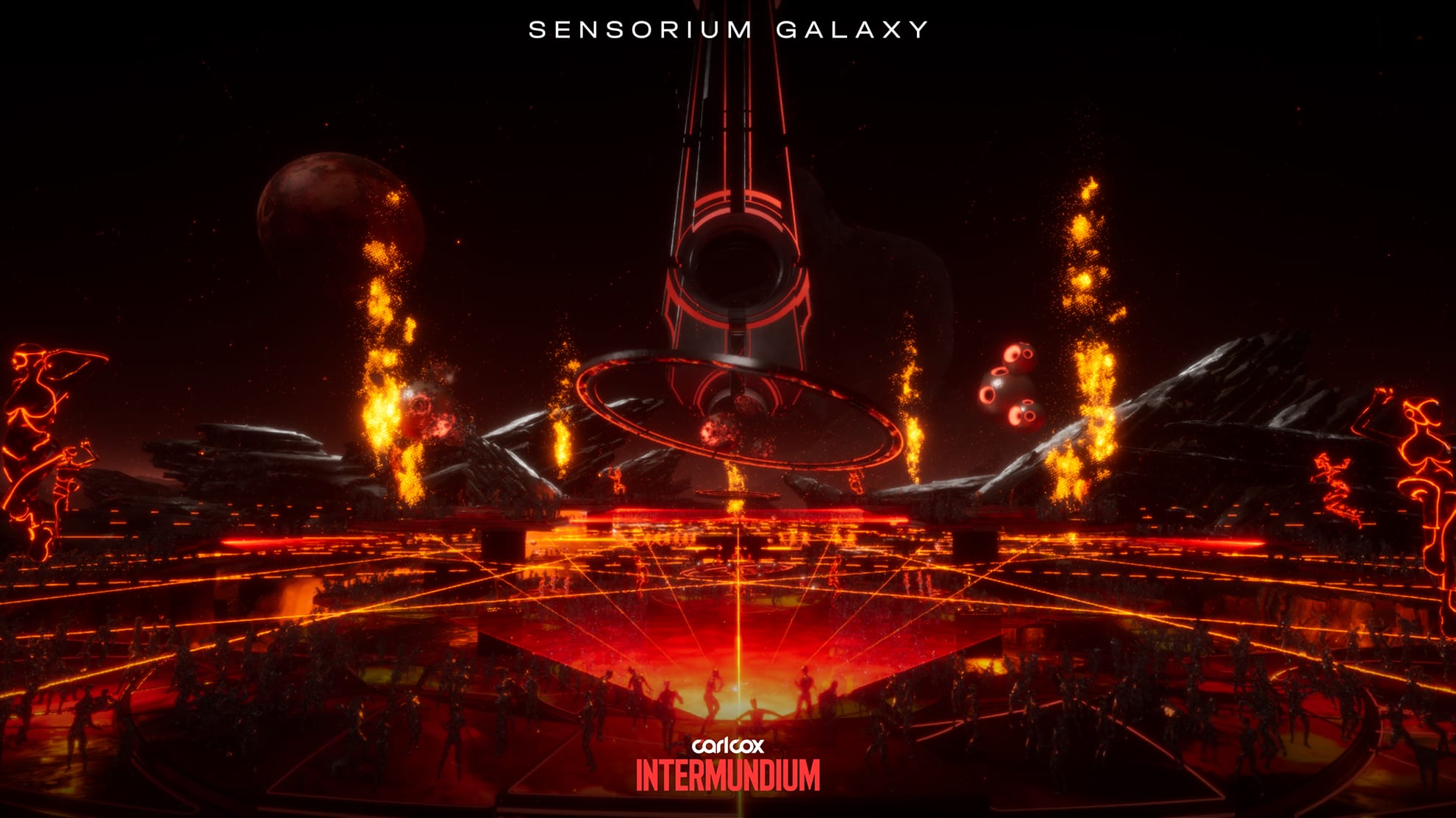This has been an outstanding year for artificial intelligence (AI) with consumers and companies becoming increasingly invested in the widespread adoption of advanced artificial technology and natural language processing (NLP) models.
Big tech has been fast on the heels of these opportunities, with Apple (NASDAQ: APPL), Microsoft (NASDAQ: MSFT), and Google parent company, Alphabet (NASDAQ: GOOGL), among others now spearheading a wave of advanced tools and systems.
As the pace of these developments continues to pick up steam, new opportunities are simultaneously presenting themselves to industries that have been historically slow to adapt digital technology that aims to create more dynamic user experiences.
We recently spoke with Sasha Tityanko, Deputy CEO and Art Director at Sensorium Galaxy, allowing us to peel back the layers behind emerging technology impacting the music industry, at large, and how these developments are providing artists and creators the opportunity to leverage digital and artificial components.
There have been droves of emerging technology entering the music industry recently. How do you see emerging technologies changing the music landscape?
“There’s an increasing recognition of the untapped potential of technologies like virtual and augmented reality in transforming how we make, deliver, and consume music. Technology is helping create innovative and memorable moments, deepening the connection that we can have with music and our favorite artists.”
Technological progress in the music industry hasn’t been linear. Widespread access through music streaming platforms, Spotify (NYSE: SPOT) and Apple Music, has further enabled technology companies to create more dynamic user experiences.
“Technology has always been a way of reaching wider and younger fans, something that we’re certainly witnessing with the growth of mixed reality entertainment across gaming, music, sporting events, and much more. Multimedia experiences are something that resonates well with audiences looking for highly interactive and more engaging shows.”
Mixed reality entertainment is becoming more common within the gaming and music industry. How are these tools contributing to the overall improved user experience?
“We believe that virtual reality technology, along with recent advancements in adjacent areas like extended reality, motion capture, and artificial intelligence, can be an invaluable creative tool in helping artists push the boundaries of their art while simultaneously giving fans a unique and much more compelling way of connecting with their favorite performers.”
Among the technological developments that have unfolded within the music industry over the last several years, virtual reality (VR) and mixed reality tools remain a milestone achievement.
Historically there has been wider interest concerning VR within the gaming industry, however, collaboration among technology and software companies has enabled the music industry to take advantage of digital platforms, allowing artists a channel through which they can showcase their work to a wider, and more connected audience.
“Because of the lack of limitations that comes with using virtual reality, imagination is the limit. On the other hand, by merging the best aspects of technology and live music with cutting-edge visual effects, artists can experiment with a new creative process.”
Tityanko shared further insight regarding Intermundium, an immersive and innovative virtual music concert that taps the challenges of all human senses while creating a concert-going experience without parallel.
Intermundium is being billed as the most ambitious virtual show to date, putting in full display the possibilities that arise from bringing world-class talent with cutting-edge virtual reality, 3D creation, and motion capture technology.
“With Intermundium, we’ve been able to craft a music venue set in an intergalactic place that comes alive and mutates along with the flow of Carl Cox’s trademark sounds. It’s like having a living being that can adapt in real time to the nature of sound and music. Additionally, we’re currently exploring features that would allow fans to communicate directly with an AI-driven avatar of the performing artists, offering a more intimate interaction.”
Intermundium will help set a standard for the industry in terms of virtual concerts, as British artist Carl Cox will headline the performance taking place on October 27th.
Virtual reality has been around for decades and yet it has struggled to win over consumers and become a commercially viable technology. Are we on the edge of something different this time?
“There are many challenges that come with the technology, particularly those connected to the hardware side of things. In the past, VR headsets have been heavy, clunky, and not necessarily user-friendly. Fortunately, devices have become exponentially better, cheaper, and accessible.”
This past June marked another hallmark achievement for iPhone creator, Apple, as it unveiled its first virtual/augmented reality headset, the Apple Vision Pro. The unveiling took place at the big-tech company’s Worldwide Developer Conference, allowing consumers a glimpse into their new headset, which has helped push the bar in terms of virtual reality and industry competition.
At the same pace, Microsoft has been working on creating unique headsets that will form part of their larger strategy that will allow them to tap into the use of VR within the business environment. Microsoft describes HoloLens as “An ergonomic, untethered self-contained holographic device with enterprise-ready applications to increase user accuracy and output.”
While businesses have been somewhat slower to adapt to the use of VR within the workplace, consumer technology remains a significant market category for big-tech household names willing to invest in the advancement of virtual experiences.
“Another major hurdle has been the cartoonish experience that many VR offerings translate into. If you enter a virtual environment, be that a game, movie, or music concert, and you’re faced with pixelated avatars and cartoonish visuals, the incentive to continue using the technology is understandably very low,” says Tityanko.
Through the use of state-of-the-art virtual reality technology and motion capture, Sensorium looks to create immersive experiences that bring artists and consumers closer to a digital ecosystem.
“By having an entertainment event that is a visual and auditory spectacle supercharged by virtual reality, we can offer fans a more dynamic and realistic experience that will hopefully lead to a deeper emotional connection to the artist’s iconic music. We’re filling in the gaps that have held back the technology for so long and coming closer to the type of digital performances that can draw millions to this medium.”
It’s often difficult to make breakthrough impressions with technology trends, especially in a highly connected and digitized consumer market. What will be Sensorium’s plans following the premiere of Intermundium?
“We are continuing to expand the digital environments inside Sensorium Galaxy as we’re not only dedicated to producing next-generation music shows but have also been focused on exploring other areas we believe can benefit greatly from virtual reality and other emerging technologies such as meditation and self-improvement practices.”
Consumer and enterprise demand for VR continues to experience steady growth on the back of wider adoption. Statistics reveal that last year, consumer and commercial VR revenue reached close to $12 billion, an improvement from the previous year. Experts estimate that VR revenue will once again surge this year, with overall predictions for revenue to reach around $15.81 billion.
VR creates new opportunities for the entire music industry, and not only helps to boost profits for tech companies. Emerging tools are helping materialize new revenue streams for musicians, promotors, and others involved in putting a virtual show together. This includes vendors selling virtual merchandise, customized virtual content, and virtual marketing, among other things.
“There are many questions still left unanswered – can a real-life musician and their artistry be transferred realistically and compellingly to virtual reality? Will their unique presence and signature moves be the same in a digital form? Can we create avatars that are an accurate visual representation of a human? Many experiments lay ahead of us as we build Sensorium Galaxy one digital brick at a time.”












